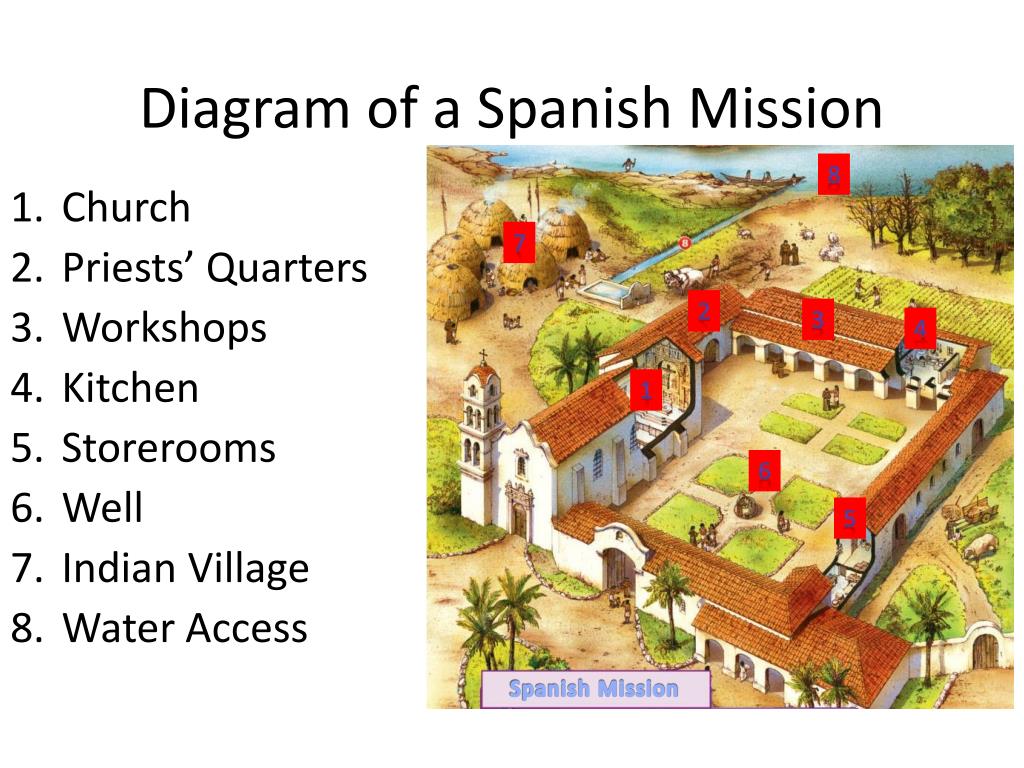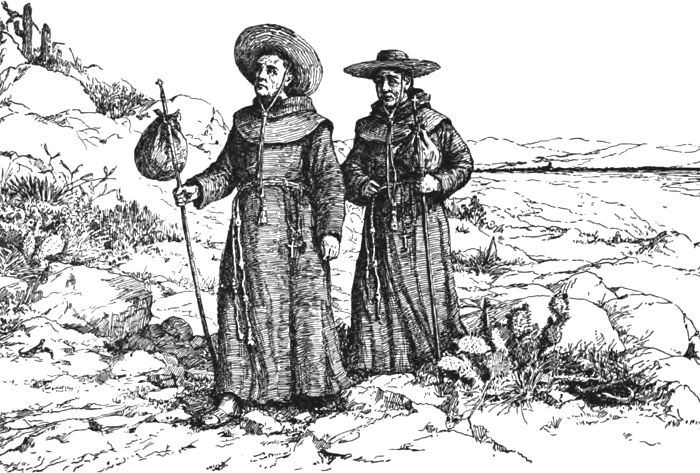
The Shadow of the Bell Towers: Unpacking the Complex Legacy of Spanish Mission Life
The image is iconic: sun-drenched adobe walls, a towering bell tower piercing a cerulean sky, and peaceful courtyards echoing with the whispers of history. For many, the Spanish missions of California, Texas, Florida, and the American Southwest evoke a romanticized past – a spiritual frontier where zealous friars brought Christianity and civilization to a wild land. Yet, beneath the picturesque facade and the enduring architectural beauty lies a far more complex, often brutal, reality. Spanish mission life was a crucible where spiritual ambition clashed with cultural annihilation, where the promise of salvation often came at the cost of freedom, identity, and life itself for the Indigenous peoples caught in its inexorable grasp.
To understand mission life is to confront a profound paradox. These institutions were, by design, centers of religious conversion, agricultural production, and colonial expansion. They were the physical embodiment of Spain’s "God, Gold, and Glory" ethos in the New World, simultaneously aiming to save souls, secure territory, and exploit resources. For the Franciscan, Dominican, and Jesuit friars who spearheaded these efforts, particularly the indefatigable Junípero Serra in California, the missions were a divine calling, a testament to their unwavering faith and a commitment to bring "enlightenment" to what they perceived as "heathen" populations.
The Genesis of a Grand Vision

The Spanish mission system began taking root in the late 17th and early 18th centuries, primarily as a means to solidify Spain’s claim to vast North American territories against encroaching European powers, especially Russia and Great Britain. While presidios (military forts) and pueblos (civilian towns) served secular colonial interests, the missions were the primary vehicle for cultural and religious assimilation. Their strategy was simple: establish self-sufficient communities where Indigenous peoples, referred to by the Spanish as "neophytes" (new converts), would be gathered, converted, educated in European trades, and integrated into the Spanish colonial system.
Father Junípero Serra, canonized as a saint by the Catholic Church in 2015, stands as the most prominent figure in the California mission system. Arriving in 1769 with the Gaspar de Portolá expedition, he founded the first mission, San Diego de Alcalá, and would go on to establish eight more before his death in 1784. Serra’s motto, "Always forward, never back," encapsulated the relentless drive of the mission enterprise, a drive that would profoundly reshape the landscape and its inhabitants.
A World Behind Adobe Walls: The Mission as a Total Institution
The missions were meticulously planned, self-contained worlds. Typically built in a quadrangle around a central courtyard, they featured a prominent church, residential quarters for friars, dormitories for Indigenous converts, workshops for various trades, kitchens, storehouses, and often a guardhouse for the accompanying soldiers. Adobe, a mixture of mud and straw, was the ubiquitous building material, offering insulation against the elements and a distinct aesthetic that endures today.
Life within these walls was rigorously structured, dictated by the relentless tolling of the mission bells. From dawn until dusk, the daily routine was a carefully orchestrated blend of prayer, labor, and instruction. Neophytes were expected to attend Mass, receive catechism lessons, and participate in a vast array of agricultural and industrial tasks. Men tilled fields, managed livestock (cattle, sheep, horses – all new to the Americas), and learned trades like carpentry, masonry, and tanning. Women were taught weaving, sewing, pottery, and food preparation.
The friars acted as spiritual leaders, educators, and administrators, overseeing every aspect of the neophytes’ lives. They introduced new crops like wheat, barley, grapes, and olives, transforming the native landscape and diet. They brought European tools and technologies, from plows to looms, fundamentally altering Indigenous methods of production. The goal was not merely conversion but a complete transformation into "civilized" Spanish subjects, detached from their traditional ways of life.
The Darker Side: Coercion, Disease, and Resistance
While the friars genuinely believed they were saving souls and elevating Indigenous peoples, the methods employed were often coercive and brutal. Initial conversions were sometimes voluntary, driven by curiosity, the promise of food and protection, or the allure of new goods. However, once an individual entered the mission, leaving was rarely an option. The mission system operated as a total institution, often enforced by the presence of Spanish soldiers who would track down and forcibly return runaways. Punishments for infractions – ranging from shirking work to attempting escape – included flogging, the stocks, solitary confinement, and even branding.

The most devastating impact on Indigenous populations, however, came not from direct violence but from the invisible enemy: disease. European diseases like smallpox, measles, influenza, and syphilis, against which Native Americans had no natural immunity, swept through the crowded mission compounds with horrific efficiency. Mortality rates soared, with some missions experiencing demographic collapse. For instance, historians estimate that the Native American population of California, which numbered around 300,000 in 1769, plummeted to less than 100,000 by 1848, with missionization playing a significant role in this catastrophe. The spiritual promises often rang hollow against the backdrop of widespread death and suffering.
Despite the strict control, Indigenous resistance was persistent. It manifested in various forms: individual acts of sabotage, feigning illness, practicing traditional ceremonies in secret, and, most dramatically, organized revolts. The Chumash Revolt of 1824, involving several missions along the California coast, saw Indigenous people take up arms against the Spanish authorities, briefly seizing control of missions before being ultimately suppressed. These acts of defiance underscore that the Indigenous peoples were not passive recipients of Spanish "civilization" but active agents struggling to maintain their autonomy and culture.
Economic Engine and Cultural Transformation
Beyond their religious function, the missions were powerful economic engines for the Spanish colony. They produced massive surpluses of grain, wine, olive oil, hides, and tallow, which were traded with presidios, pueblos, and even foreign ships. This economic productivity was built on the forced labor of the neophytes, effectively making the missions large, self-sufficient ranches and factories. The wealth generated by mission labor contributed significantly to the colonial economy, albeit at an immense human cost.
The cultural impact was profound and, in many ways, irreversible. Traditional Indigenous languages were suppressed in favor of Spanish. Ancestral spiritual practices were forbidden, replaced by Catholic rituals. The intricate social structures of tribes were disrupted, and their deep connection to their ancestral lands severed. While some aspects of European culture, such as new agricultural techniques or tools, were adopted, they came at the expense of a rich and diverse Indigenous heritage that had thrived for millennia.
Decline and Secularization
The mission system’s dominance began to wane with Mexico’s independence from Spain in 1821. The new Mexican government, influenced by Enlightenment ideals and eager to assert control over valuable mission lands, initiated a process of secularization in the 1830s. The plan was to convert the missions into parish churches and distribute the mission lands to the Indigenous people who had worked them. However, in practice, much of the land and wealth ended up in the hands of Mexican Californios (landowners), leaving the majority of Indigenous people dispossessed and without the skills or resources to thrive in the rapidly changing society.
The grand mission buildings fell into disrepair, their fields lay fallow, and their once-bustling courtyards grew silent. The Indigenous populations, now stripped of both their traditional lives and the mission’s dubious protection, faced further marginalization and exploitation.
The Enduring Legacy: A Contested History
Today, the Spanish missions stand as poignant reminders of a pivotal era in North American history. Their architectural beauty draws millions of tourists annually, who marvel at their resilience and historical significance. They are celebrated for their role in bringing European culture, agriculture, and religion to the continent, and as centers of early California history.
However, the legacy of the missions remains deeply contested. For many Native American communities, these sites are not symbols of peaceful conversion but monuments to oppression, cultural destruction, and immense suffering. Contemporary Indigenous voices continue to call for a more honest and comprehensive understanding of mission history, one that acknowledges the profound trauma inflicted upon their ancestors. The canonization of Junípero Serra, in particular, sparked widespread protests and highlighted the stark divergence in how his actions are perceived – as a saintly evangelist by the Church, and as an agent of colonial violence by many Indigenous peoples.
The Spanish missions represent a complex tapestry woven with threads of fervent faith, colonial ambition, cultural exchange, and human tragedy. They are a powerful illustration of how noble intentions can lead to devastating consequences when imposed upon unwilling populations. To truly understand mission life is to look beyond the serene bell towers and picturesque courtyards, to grapple with the profound human cost of a grand vision, and to acknowledge the enduring shadow that still falls across these historic sites. It is a history that demands reflection, empathy, and an ongoing commitment to understanding all its intricate, often painful, truths.


